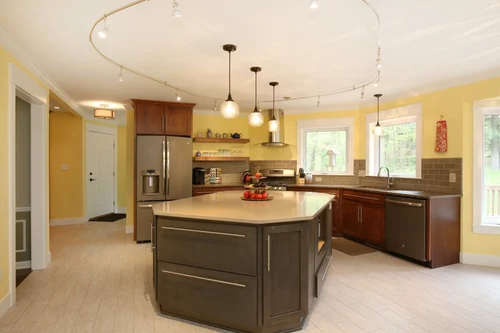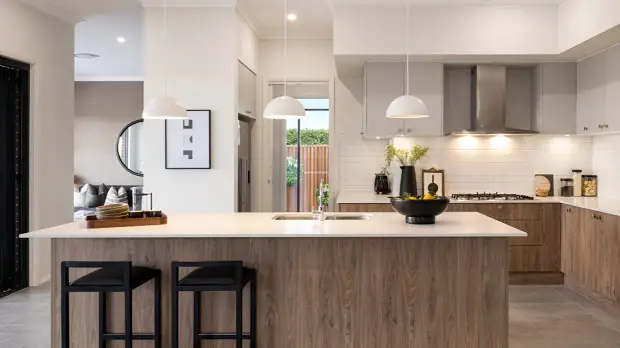The architectural features of a house often hold fascinating secrets and serve various practical purposes. What is a bulkhead in a house? is a question that unravels one such element that plays a significant role in the design and function of residential structures. In this exploration, we will uncover the definition, functions, and diverse uses of a bulkhead in a house. Whether you’re a homeowner looking to better understand your property or a curious individual interested in architectural details, this guide will provide insights into the world of bulkheads and their relevance in residential construction.
The Intriguing World of Residential Bulkheads
If you’ve ever been mystified by those peculiar doors leading to the basement or cellar of your home, you’re not alone. Bulkheads, often an overlooked feature of residential architecture, have a unique role to play. In this guide, we’ll demystify the concept of bulkheads, uncover their various types, explore their construction and materials, and delve into their functional aspects.
What is a bulkhead?

In the context of residential architecture, a bulkhead is an external access point to the basement or lower level of a home. It’s typically a set of doors or a single door that opens to a stairwell or set of stairs, providing convenient access to the basement. These external access points are usually located at the rear or side of a house, with some of them below ground level.
The Role of Bulkheads
Bulkheads serve several crucial functions in residential structures:
Exterior Access: They provide a secure entry and exit point to the basement, facilitating the movement of large items like furniture and appliances.
- Weather Protection: Bulkheads are designed to keep the basement dry and safeguard it from the elements. They act as barriers, preventing rain, snow, and debris from entering the lower level.
- Emergency Egress: In specific cases, bulkheads can serve as emergency escape routes. When equipped with the right features, they ensure safe egress from the basement in case of emergencies.
Types of Residential Bulkheads
In the world of residential bulkheads, there are several distinct types, each with its unique characteristics:
Exterior Access Bulkheads
The most common type of residential bulkhead, exterior access bulkheads, typically consist of one or more doors that open to a stairwell leading to the basement. These bulkheads are versatile and serve as general access points to the lower level, ideal for moving items in and out.
Cellar Doors
Cellar doors are a subset of bulkheads, often found in older homes. They are specifically designed for accessing a cellar, which is a type of basement. Cellar doors are usually narrower and smaller than standard exterior access bulkheads.
Bulkheads as Escape Routes
In certain homes, bulkheads are more than just access points. They are designed to function as emergency escape routes. Equipped with anti-entrapment devices and easy-to-open doors, these bulkheads ensure a quick and safe exit in the event of a fire or other emergencies.
Bulkhead Construction and Materials
The construction and materials of bulkheads are essential considerations for their functionality and durability.
Design and Structure
Bulkheads are typically constructed with a sloping or angled design. The doors are hinged at the top, allowing them to swing open easily. This design not only facilitates exterior access but also ensures that rain and snow runoff away from the doors.
Materials for Bulkheads
Bulkheads are commonly made of durable materials that can withstand exposure to the elements. These materials include steel, aluminum, or concrete. The choice of material depends on factors like climate, local building codes, and the specific requirements of the home.
Best soil for grading around house
Why use a bulkhead?
There are several reasons why you might want to use a bulkhead in your home:
Concealment: Concealing unsightly wiring, ducting, and pipes in your home is the bulkhead’s main purpose in terms of concealment. You can give your property a professional and organized appearance by concealing these components.
Soundproofing: Bulkheads can be utilized for soundproofing, which will enhance the room’s acoustics. They can contribute to soundproofing and lowering noise levels in the space by enclosing pipes and ducting.
Lighting: Lighting equipment, such as recessed lighting or pendant lights, can be housed inside bulkheads. Also, it can offer extra light sources while giving your room a more unified, integrated appearance.
Aesthetics: In terms of aesthetics, bulkheads can be employed to enhance a room’s design. They could be created to create a distinctive focal point or to match the decor of the area. A room’s visual depth and intrigue can be increased by a well-designed bulkhead.
How are Bulkheads Installed?
The manner in which a bulkhead is installed will vary depending on the construction style and aesthetic preferences. The procedure for installation is described in general here:
Measure the space
When erecting a bulkhead, the first step is to measure the area where it will go. The bulkhead’s size, shape, and material requirements can all be determined using this information.
Install the framework
Installing the framework will be necessary after you have decided on the bulkhead’s size and shape. Fastening the frame to the ceiling and walls is commonly accomplished using wood or metal framing.
Install the drywall
You must put the drywall up once the frame is put in. The drywall must be size-cut and fastened to the frame in this manner. The light fixture must have an aperture if a recessed bulkhead is being installed.
Finish the edges
After the drywall is put up, you must finish the bulkhead’s edges. With molding or trim, you can provide a seamless transition between the bulkhead and the ceiling.
Paint or finish
Last but not least, you must paint or finish the bulkhead to complement the decor of the space. To ensure that the bulkhead merges seamlessly with the rest of the room and to help create a coherent look, do as such.
Bulkhead Design Options
1. Recessed: Installed onto the ceiling, a recessed bulkhead creates a depression or sunken section. A sleek and minimalist appearance may be achieved using this style, which is common in contemporary homes.
2. Suspended: To give the impression of a drop ceiling, a suspended bulkhead is one that is hung from below the ceiling. A more industrial appearance can be achieved using this style, which is common in commercial structures.
3. Tray ceiling: giving it the appearance of a tray, this is a type of bulkhead known as a tray ceiling. The use of this style can produce a dramatic effect and is common in formal dining rooms.
4. Cove ceiling: A cove ceiling is a sort of bulkhead that has sunken edges, giving it a curved or rounded shape. A gentle and romantic appearance can be achieved using this popular bedroom design.
5. Lighted: Bulkheads that have lights installed inside them, such as pendant lights or recessed lighting, are referred to as lit bulkheads. With this style, which is common in kitchens, you may create a roomy workplace that is also useful.
Tips for Maintaining Bulkheads
After installation, your bulkhead needs to be carefully maintained to ensure that it lasts for many years. The following advice will help you maintain your bulkhead:
Clean regularly: Bulkheads can accumulate dust and debris over time, so it’s crucial to clean them frequently. To get rid of any accumulated dust or grime, use a soft cloth or a vacuum.
Check for water damage: When installing a bulkhead in a space with HVAC or plumbing ducting, it’s necessary to frequently inspect the area for water damage. Keep an eye out for water stains or mold, and take fast action if necessary.
Avoid hanging heavy objects: Heavy things should not be hung from bulkheads since they are not intended to support such weights. The bulkhead may sag or possibly collapse as a result of this.
Use caution when painting: When painting, take care not to get paint on the nearby walls or ceiling if you need to paint your bulkhead. Use drop cloths to cover the floor and walls, and paint steadily.
Can bulkheads be removed or relocated?
Yes, bulkheads can be removed or relocated. Bulkheads can be removed or moved, but it’s crucial to have a qualified contractor inspect the building to identify the best way to do so without harming the nearby walls or ceiling.
What are the benefits of installing a bulkhead?
A bulkhead can be installed to conceal unsightly wiring, ducting, or pipes, give architectural interest to a space, add aesthetic components, and serve as a surface for lighting fixtures or other adornments.
Can bulkheads be customized?
Absolutely, bulkheads can be modified to meet a homeowner’s unique needs and aesthetic choices. Size, form, materials, and finishing options are all customizable.
What materials are typically used to construct bulkheads?
A range of materials, including wood, drywall, metal, or a combination of materials, can be used to build bulkheads. The material selected will be determined by the project’s particular requirements as well as the intended aesthetic outcome.
Are there any safe considerations when installing bulkheads?
Can bulkheads be used in any room of the house?
Bulkheads can be utilized in any room of the house, although they’re most frequently employed in kitchens, bathrooms, and other places where HVAC or plumbing ducts need to be hidden.
How do I choose the right type of bulkhead for my home?
Your choice of the bulkhead will be influenced by a number of variables, including the room’s purpose, your personal tastes in design, and your financial situation. To choose the ideal bulkhead for your requirements, think about speaking with a qualified contractor or interior designer.
How do I maintain a bulkhead?
A bulkhead needs to be cleaned frequently to remove dust and debris in order to remain in good condition. Look for indications of water damage or other problems, and take fast action to fix any that you find. While painting or otherwise completing the surface, take care not to hang anything too heavy from the bulkhead.
Can bulkheads add value to my home?
A properly designed and constructed bulkhead can increase the value of your home by enhancing both its appearance and utility.
How much does it cost to install a bulkhead?
The size, materials, and complexity of the job are just a few of the variables that will affect how much it will cost to install a bulkhead. For a precise pricing estimate, speak with a qualified contractor.
Can I install a bulkhead myself?
Installing a bulkhead is a do-it-yourself project, although prior building and design knowledge is recommended. The best course of action is to engage a qualified contractor if you don’t feel confident handling the installation process.
Conclusion
An effective and adaptable building material can be utilized to conceal unsightly wiring, ducting, and pipes in your home. No matter what type of bulkhead you select—recessed, suspended, tray, cove, or light—it’s crucial to install and maintain it correctly to make sure it lasts for many years. A bulkhead may enhance the functionality and aesthetic appeal of any room in your house with the right care and upkeep.

